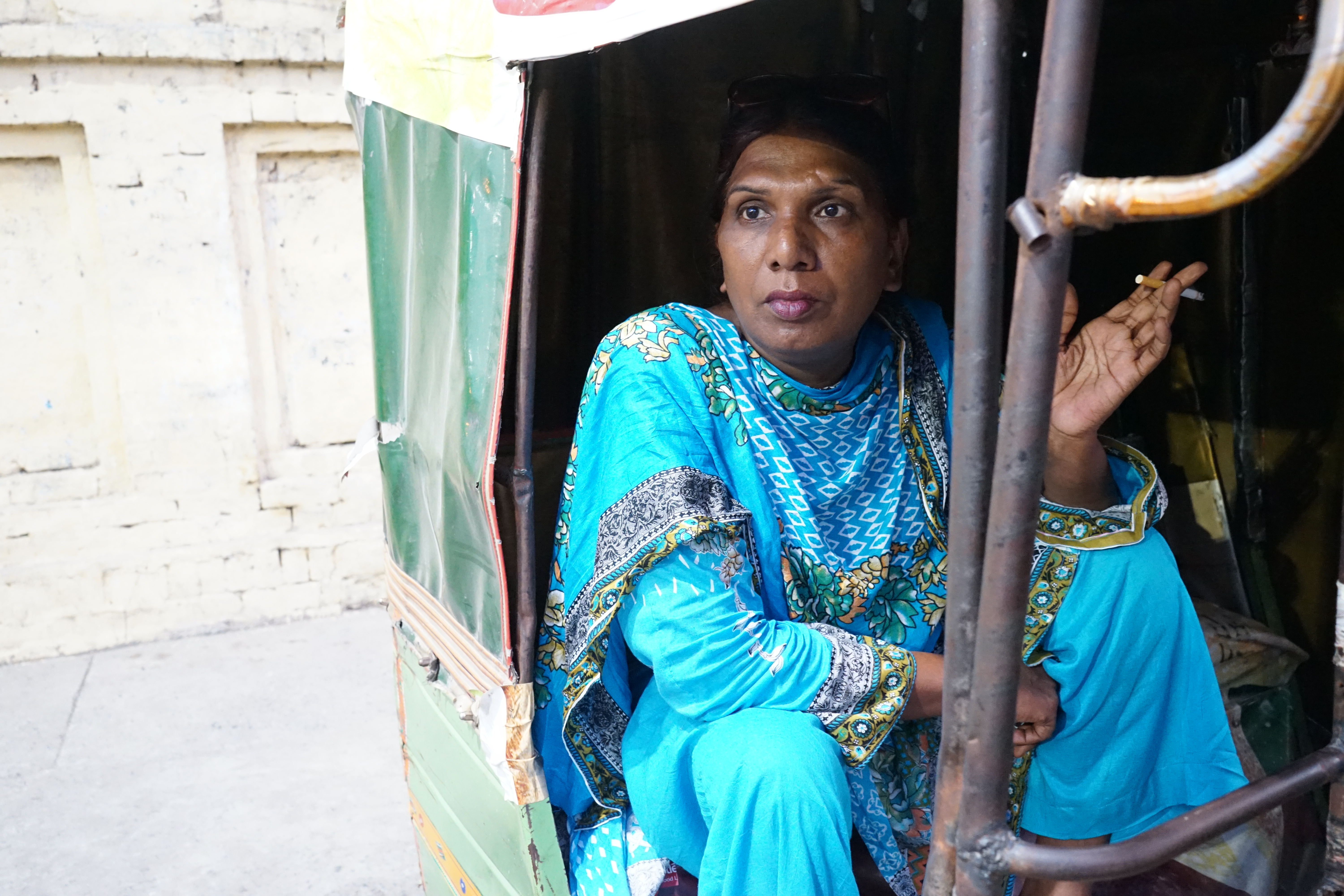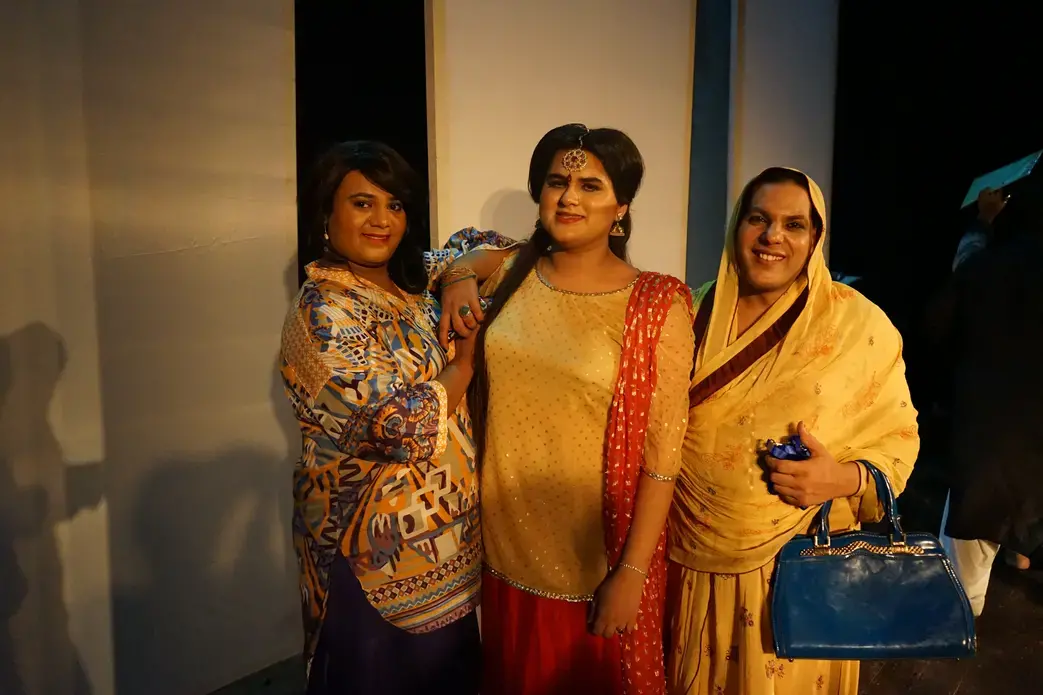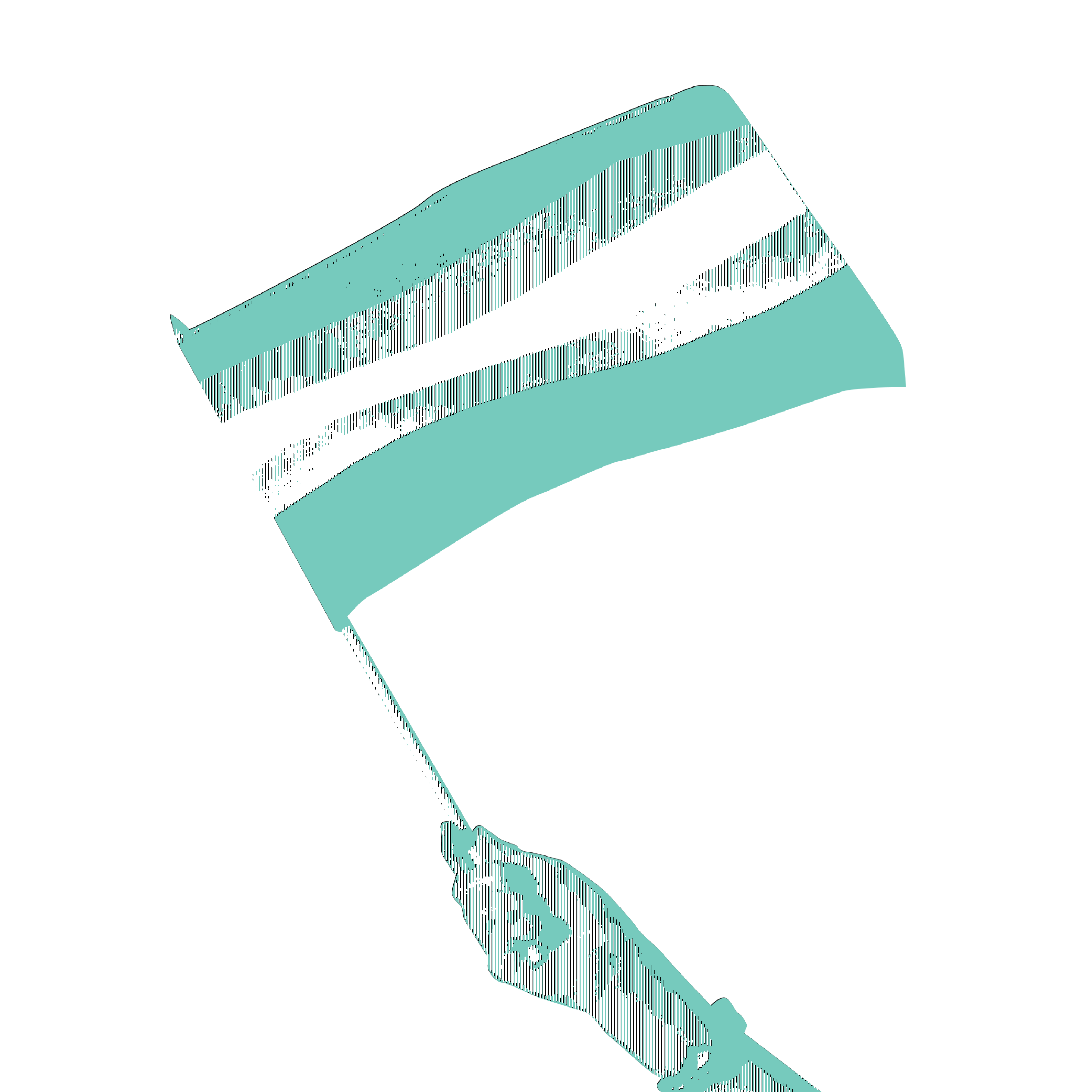She was wearing a bright green sparkly outfit with long black hair and pristine makeup. I was sitting in the car pulled over on a crowded food street in Lahore. She was just about to walk past our car, until we made eye contact and I gave her a half-smile.
She stopped and leaned her head to the window of my car. When she spoke, her voice was deep. I had come to Pakistan to report on the transgender community, and this was my very first encounter with a hijra, a group of people well documented, yet still very much misunderstood both by Pakistanis themselves as well as foreigners.
So, who are they?
After a few stutters, I mustered up the courage to ask, "Are you a hijra?" She paused for a second, looking as if I had offended her, and then said to me, "We prefer the term khawaja sira."
While I never saw Anchal again after our conversation that night, her statement reflects a not uncommon preference among hijras to be called the more politically correct term of khawaja sira over other terms like hijra in Urdu and khusra in Punjabi. The term khwajasaras (now spelled differently) derives from the Mughal era and refers to eunuchs who were special advisors to the royal courts. [1]
Eunuchs, more generally, have been present since the arrival of Islam in South Asia during the 11th and 12th centuries. Observing an elevated status, they were often imported slaves who served as well-respected generals, political advisors, and harem guards. During the time of Prophet Muhammad, eunuchs held sacred rites in holy locations like the Ka'ba in Mecca and at the burial site of the Prophet in Medina. Some eunuchs even served as the guardians of Prophet Muhammad's sanctuary.[2] Eunuch is often cited as the literal translation of hijra, an identity that exists throughout South Asia and roughly applies to about 1.5 million Pakistanis alone.[3]
However, only a fraction of contemporary khawaja siras undergo castration to become eunuchs. Nonetheless, when Pakistan's Supreme Court in 2009 legally recognized a 'third gender' in reference to khawaja siras, the court documents made no mention of the term hijra or khawaja sira but rather only 'eunuch.'
Often walking the streets in brightly colored salwar kameez at dusk, many hijras perform at weddings and birthdays events and are involved in begging along with sex work. Pakistani hijras are traditionally believed to have been granted a special power by God to bestow blessings or offer badduas (or curses). My second cousin Saba Fayyaz, a Pakistani now 23 years old working as a teacher in Qatar, said, "I don't like to mess with khawaja siras. I am afraid getting their curse. I believe these people are very close to Allah (or God)."
Largely believed by society to be intersex persons, khawaja siras are quite diverse and differ. While Anchal suggests that khawaja sira and hijra are synonymous, Jannat Ali thinks otherwise. She works as the drop-in center coordinator at Khawaja Sira Society (KSS), a community-based organization dedicated to helping uplift the khawaja sira community in Lahore.
"A hijra is one who is in the guru-chela system [the hierarchy that is one of the defining aspects of hijra culture]. A khawaja sira can be anyone, even someone who is not in the system; they too are khawaja sira...like ME. I'm not in the system but my soul is like that of a woman. People like this...whose souls are feminine...they are khawaja siras. To be specific, a trans woman is a khawaja sira," Jannat said.
Now 27 years old, Jannat is confident, determined, and ambitious. Her passion for social activism is obvious: She has visited countries across the globe—Dubai, Denmark, Turkey, Thailand and the United States—where she doubles as a professional kathak dancer who combines her activism with her art.
Jannat now identifies as a transgender woman, but that was not always the case. "Some people told me I'm gay. Some told me I'm a cross-dresser. At that time, I was searching out my own identity," she explained.
Jannat is not in the guru-chela system. (A guru is considered a head teacher and chelas are their disciples. Gurus have certain authority over their chelas, and chelas can work their way up to becoming gurus themselves.) More than once, I heard that survival within the khawaja sira community is incredibly difficult without a guru.
"For me this was my challenge," Jannat said. " 'You are not someone's chela, so how will you be accepted?' The first question they ask you is, 'Who is your guru?' Members of KSS would say to me, 'How will you survive? For you, it will be a very big challenge.'"
After initial struggles, Jannat eventually found a receptive and welcoming environment. "Now I am humbled and honored to say that if I say to 100 or 200 transgenders to sit here or move here, they will listen to me. They really like me, but for this you have to show them that you can do something for them."
Khawaja siras, condemned for their girlish behaviors from childhood, often leave their families to join a hijra community. Jannat explained, "When we come out and tell our parents, they know we are different. Our preferences are different; our choices are different, but because of society—that people don't make subtle offensive comments or talk badly about us to them—or in fear that the neighbors or relatives or civil society members don't condescendingly say, 'Your children are like this', parents try to change or suppress their children. They scold us and tell us, 'don't walk like this; don't talk like this.'"
Hijras pay 125 rupees to become the chela of their chosen guru, Sunny reported. This sort of entry fee is called chittai.
Sunny, 23 years old, has a college degree in both journalism and sociology as well as a one-year diploma in fashion design. She currently works for NAZ Pakistan, the mother organization of KSS dedicated to helping LGBT youth in Pakistan.
"Sometimes gurus take out their grudges on their chelas. All gurus are not perfect," Sunny said. "If someone makes a mistake, they demand money— 5,000, 10,000 or even 100,000 rupees as a fine, and you have to pay. If you don't pay this, then you are considered not from our community. All community members are not allowed to meet with you." Hijras refer to this penalty as their hookah pani, or socializing with their other hijra community members, being cut off.
Lively and friendly, Sunny would sometimes be singing happily in the office as she worked. She teased me about bringing her chocolates, which she loves.
Rocking a Hawaiian tee with black-framed rectangular glasses, she said, "I consider myself a trans woman, but I am also a follower of the hijra culture. Hijra is a culture," and later added, "Hijra is not a trans woman. In Pakistan, trans women have to follow this culture. There are no other options. But now some trans women are not in this culture"— like Jannat.
"Some khawaja siras or hijras of Asia say that they are not women. A trans woman is a woman," Sunny said, explaining, "Those who are left in the middle, who consider themselves both, he is JUST a hijra or you can call it a third gender."
For Sunny, "There is no difference. Khawaja sira and hijra is the same thing."
Technical differences aside, Jannat and Sunny seem to agree that gurus sometimes have high demands.
While the guru-chela system is a defining characteristic of hijra identity, other aspects of hijra and khawaja sira identity in Pakistan seem less certain.
So, again, who are they?
It depends on who you ask, really. Not all identities can be neatly boxed, especially when the history runs so deep and the perspectives so diverse.
Of course, that's not to dismiss the similarities that string together Pakistan's khawaja siras, but rather to acknowledge how defining khawaja siras as simply eunuchs or transgenders— while perhaps useful in its brevity— can strip away from the contemporary and historical richness that encompasses the identity.
(I have only used the first names of the khawaja siras because it is customary for them to adopt a more feminine name and go by that name. Though in my interactions with khawaja siras some would use male and female gender pronouns interchangeably, they seem to appreciate being addressed as a female by outsiders.)
This article was updated on December 7, 2016.












